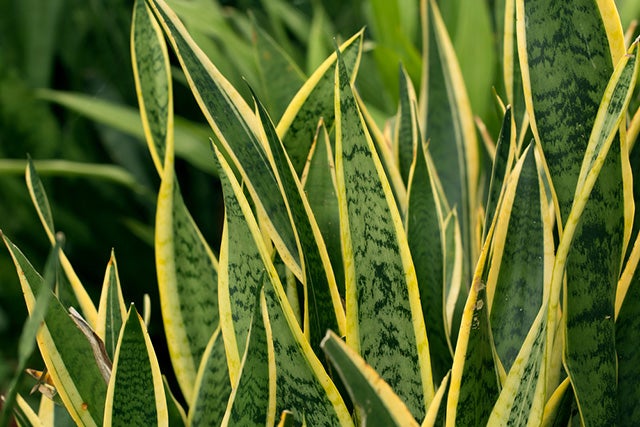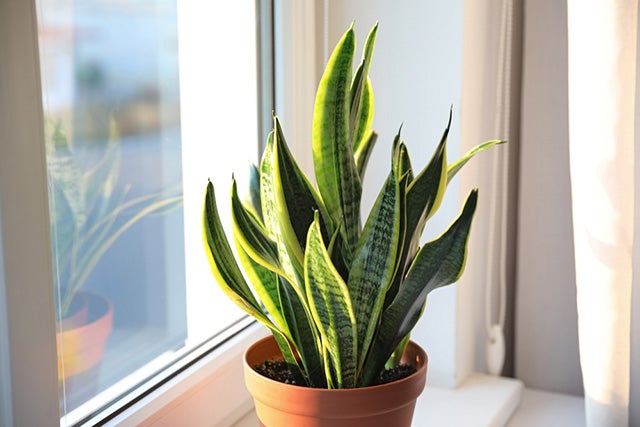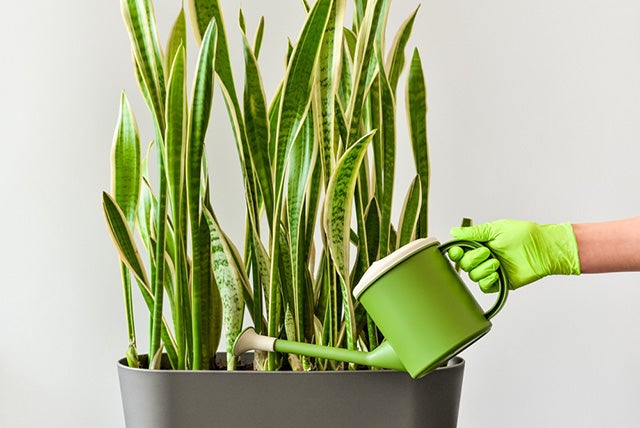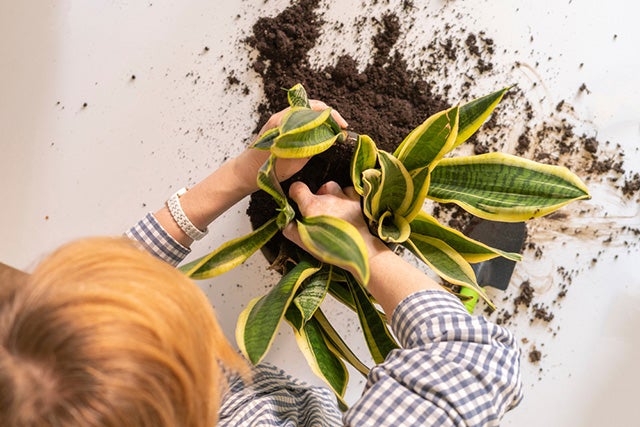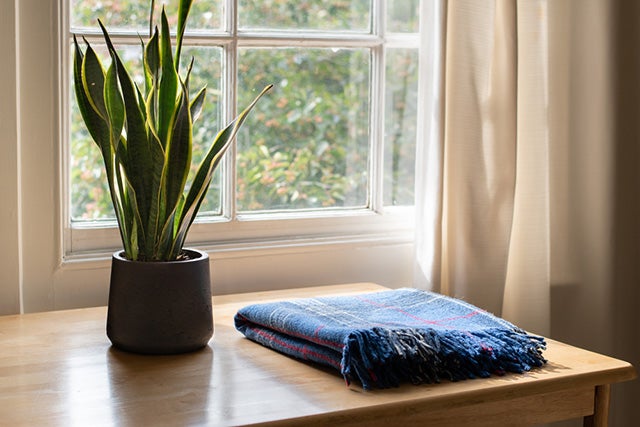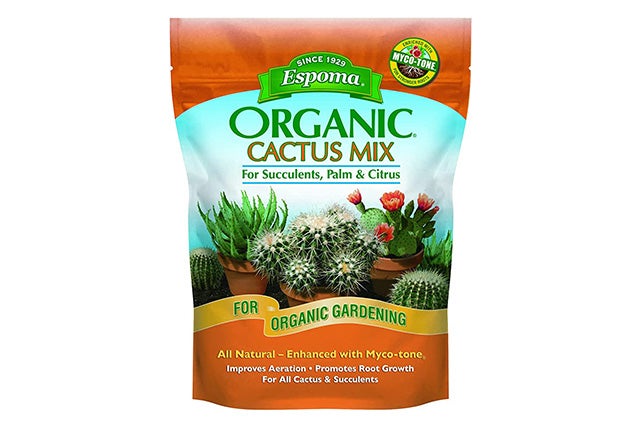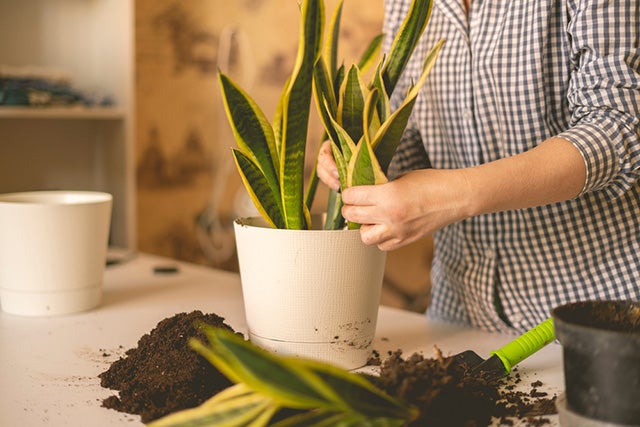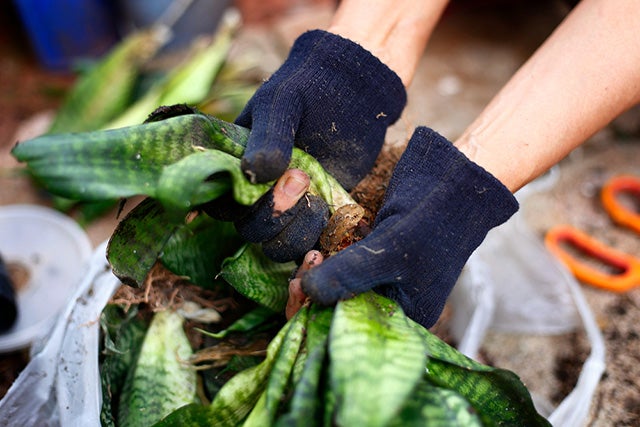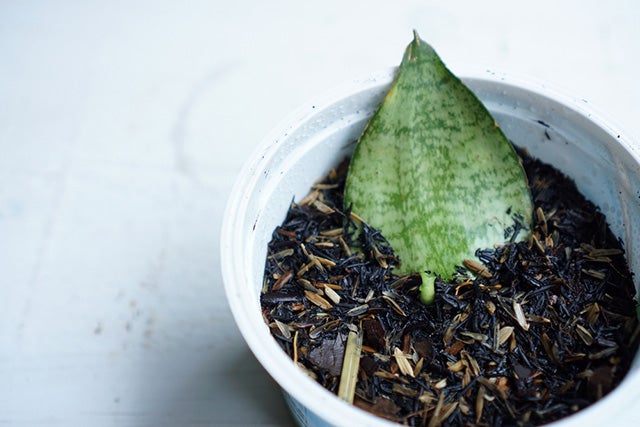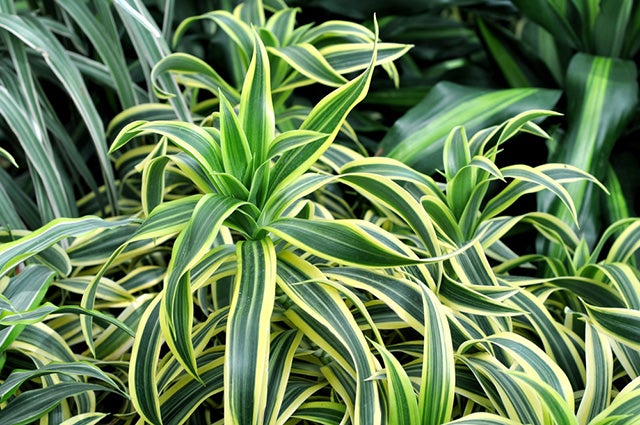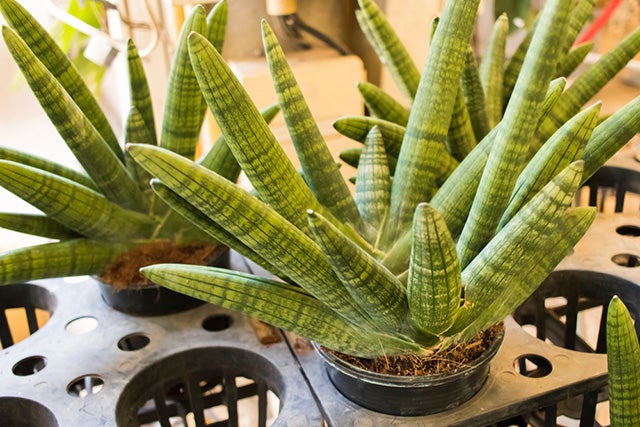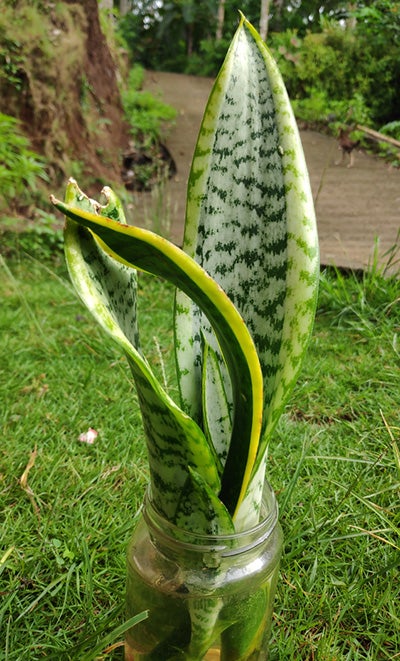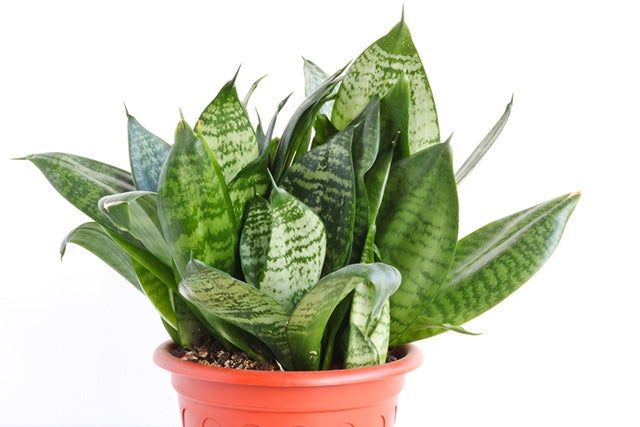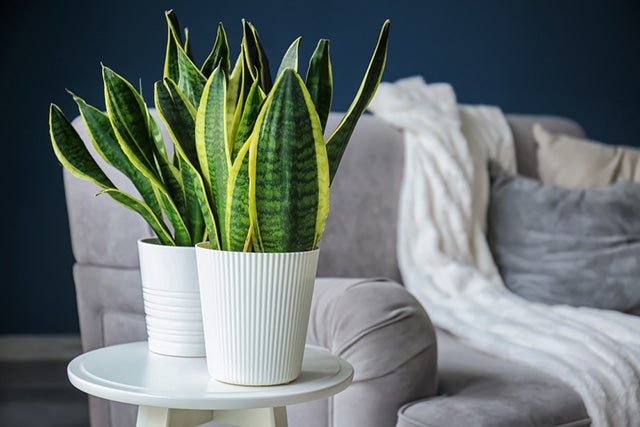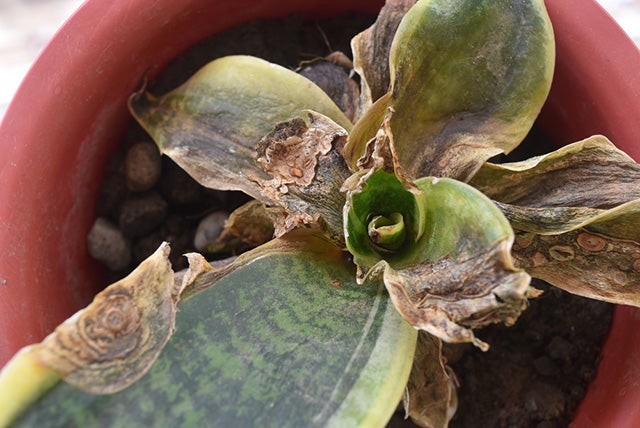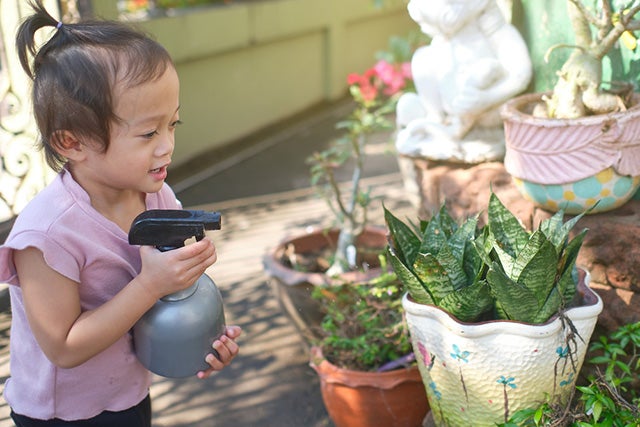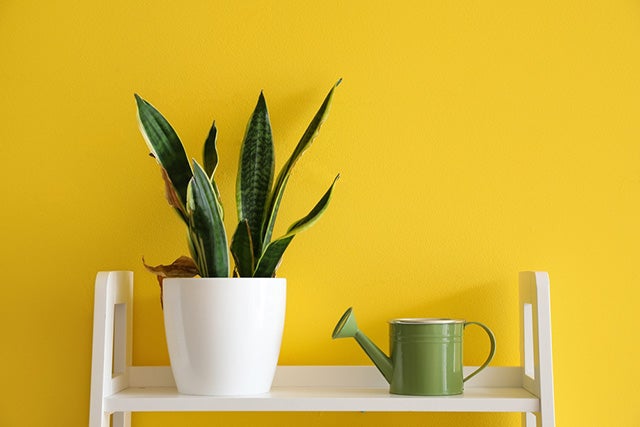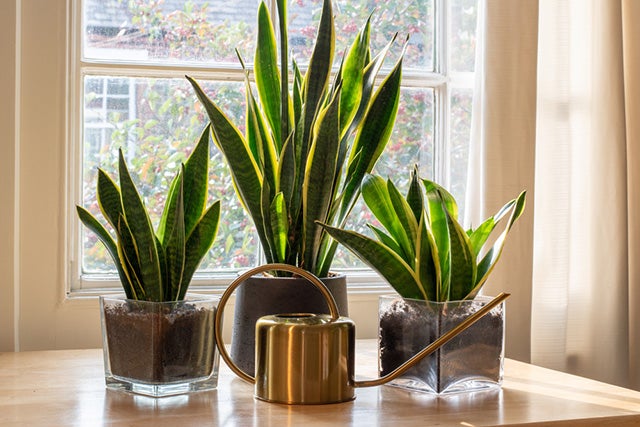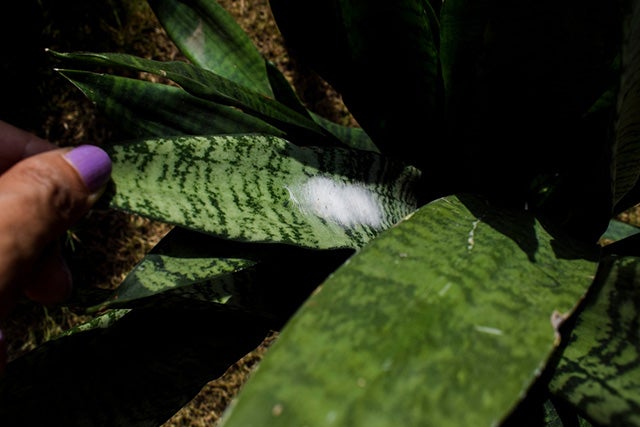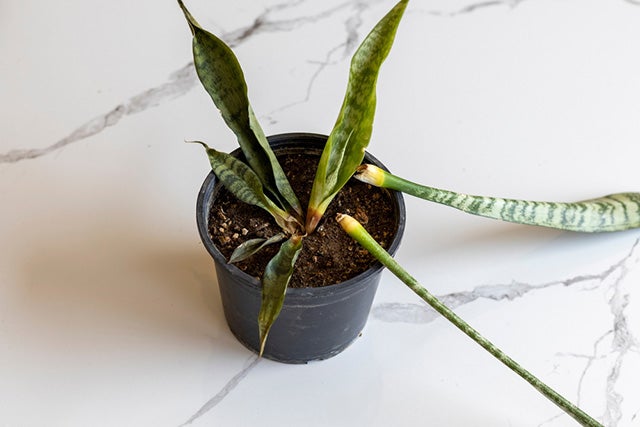One of the most well-liked and resilient types of houseplants is the Dracaena trifasciata, which is more generally known as the snake plant. The botanical name for this plant was Sansevieria trifasciata up until 2017. If you want a plant that’s easy to care for and can offer benefits even when placed in the bedroom, keep reading to discover why the snake plant is so popular.
What Is a Snake Plant?
The Dracaena trifasciata, aka the snake plant, is native to both Asia and Africa but is now widely grown as an indoor plant. It is distinguished by its evergreen leaves in the shape of swords that grow in an upright position and nearly appear to be artificial foliage.
Because they are attractive to the eye, simple to care for, and can survive with only a small amount of water, snake plants are frequently employed as plants of interior design.
Features of a Snake Plant
Appearance
The leaves are stiff and shaped like swords, and the plant’s height can range anywhere from six inches to eight feet. Although snake plants can come in a variety of colors, the majority of them have yellow margins and green bands on their leaves.
These plants are not only simple to cultivate but also, in many situations, almost impossible to kill.
Light
The ideal lighting for snake plants is diffused but constant illumination with some direct sunlight. They can adapt to conditions of intense sunlight and will also survive in low-light environments.
Water
Between waterings, the soil should be allowed to dry out. In the winter, watering should be limited to once per month or whenever the surface of the soil seems dry to the touch. It’s always best to under-water a plant because drowning it in a pool of water can kill it.
Soil
Snake plants prefer a potting mix that is loose and has good drainage. This plant will thrive on soils that are sandier. Use a potting medium that has a low percentage of peat in it.
The use of peat is beneficial in a variety of contexts; yet, it has the potential to become compacted and occasionally exhibits difficulties in rehydrating or draining. A potting mix designed specifically for cacti and succulents is the medium of choice.
Temperature
Snake plants thrive in warm environments but will wither and die if they are subjected to temperatures that are lower than 50 degrees Fahrenheit. Place it where it will be shielded from any drafts that may be present. Try to keep the temperature between 70 and 90 degrees Fahrenheit. Avoid exposing the plant to frost because it will die.
Fertilizer
When the snake plant is in its growing season, provide nutrition by using a cactus fertilizer that is low in phosphorus and nitrogen, as well as a balanced liquid slow-release 10-10-10 fertilizer or a 20-20-20 fertilizer that has been diluted to half its normal strength. Avoid applying fertilizer during the winter months.
How Do You Prune and Propagate the Snake Plant?
With pruning, you can use sterile tools (like scissors or shears) to remove damaged and mature leaves. Do this when the snake plant is actively growing, which is typically in the spring or summer.
You can prune the snake plant during growth season because otherwise, you can put a great deal of stress on the plant. Cut the tallest leaves if you want to prevent the plant from growing too high.
It is recommended to do the process of propagation during the growing season, either in the spring or the summer. If the snake plant is at least four inches tall when it is repotted, it can be simply divided into new plants without any difficulty.
Alternately, new shoots may grow from the soil and be capable of being transplanted into other containers. Cuttings are another method for the propagation of snake plants.
Root Division Propagation
- Obtain cactus-specific potting soil, a sharp knife, and a clean container.
- After removing the root ball from the outdated container, set the plant down on a level surface.
- Remove any soil clinging to the root structure or rhizome by carefully brushing it off with your hand.
- Use the sharp knife to cut the plant into portions, taking care to preserve the integrity of the plant’s roots throughout each division.
- The plant will not die even if you cut it through the middle.
- Transplant the newly cut pieces of the snake plant into a fresh container filled with cactus potting soil.
- Give it some water and put it somewhere that gets a little bit of sun.
Leaf-Cutting Propagation
- Cut a long and healthy snake plant leaf.
- The cutting can be rooted in water by placing it in a jar of clean water and then submerging the end that was cut off.
- Put it in an area that gets some sunlight and keep an eye out for new root growth.
- A fresh supply of water should be added every few days to maintain the same level.
- To prevent the formation of germs or algae, you should change out the water in the tank every two weeks and replace it with fresh, clean water.
- After the roots have grown to be at least an inch long, place the root end in a potting mix for cacti that has good drainage.
- Give it some water and put it somewhere that gets filtered sunlight.
How Big Does a Snake Plant Get?
The size of your snake plant will ultimately be determined by several things, such as the species it is, the amount of sunlight it receives, and where you reside.
Since Dracaena is native to tropical areas, they can adjust well to warm climates. They are resilient and can thrive even with a minimal amount of attention. If you reside in a cooler region, you need to make sure that your snake plant gets enough light to meet its requirements.
The growth of your plant may also be stunted if you do not supply it with adequate light or water. Be sure to give your plant an adequate amount of water, particularly in the drier months.
The Sansevieria stuckyi species is the highest of all the varieties; its spherical leaves can grow up to a height of ten feet. In contrast, the Sansevieria trifasciata ‘Hahnii’ variants never grow more than 5 inches tall and have the appearance of bird nests.
Some snake plants develop at a painfully slow pace, producing just one leaf each year and being satisfied to remain in the same container for decades at a time. Others are hardy, having hefty rhizomes that can penetrate the walls of the container.
You can protect more costly planters by cultivating snake plants in less expensive plastic pots that are nested inside of more expensive and aesthetically pleasing pots.
The Sansevieria trifaciata laurentii snake plant is easily identified due to its typical height. It features leaves with a variety of colors. Both of its sides are covered with yellow and green striped patterns that are not regular.
The leaves tend to curl in an upward direction. When it does bloom, it produces clusters of dainty white flowers that have a pleasant aroma, even though it does so rather infrequently.
This particular form of Sansevieria can attain a height of between one and two feet as it matures. Depending on the amount of sunshine available along with other factors, several species can grow to be over three feet tall.
When fully grown, S. trifasciata Hahnii measures less than 6 inches in height. It is located at the very bottom.
The average height of a Snake Plant that has been grown indoors is between 7 and 8 inches. The growth rate of a Sansevieria ranges from modest to moderate. Rhizomes, which are underground stems, are how they propagate and cause new growth to emerge.
They develop more rapidly in natural light that is more intense, while their development is slower in light that is less intense.
Depending on how tall the plant is, the breadth of the entire plant can range anywhere from 6 to 36 inches. These plants have the potential to add between 1 and 2 feet to their height per year.
The rate of growth of your snake plant, as well as its overall size, will be determined by a few essential growth variables. Examples of this include providing the right amount of water, light exposure, and having the right kind of soil.
You might be interested: Weird Plants For Your Bedroom That Will Help You Sleep Like a Baby
Best Places to Put a Snake Plant
According to Feng Shui principles, the best places to put a snake plant are the bedroom, the bathroom, the home office, the dining room, and the entryway.
Placing the snake plant in sections of the home that are recognized as being part of the Bagua is a simple approach to take advantage of the Feng Shui potential of this plant. It is believed that the positive and negative parts of your life are tied to your indoor space energy map, which is referred to as a Bagua.
Not only may the aesthetics of the rooms in your home benefit from the addition of snake plants, but there is a widespread belief that these plants also bring positive energy into the areas where people spend the most time.
When arranged properly throughout the home by the principles of Feng Shui, several different houseplants are believed to be able to generate healing energy. Having said that, several rules need to be followed when carrying this out.
What About Light?
The growth of any plant, including a snake plant, requires exposure to light. This is also true for the snake plant. To survive, snake plants also require light. On the other hand, they are exceptionally versatile about practically any form of lighting environment.
Snake plant leaves are susceptible to sunburn and will also quickly dry out when exposed to direct sunlight. When conditions are like this, brown blotches will appear on the leaves.
The optimal conditions for the growth of a snake plant are exposure to indirect light. This kind of lighting is filtered, so it may be used all day long, and it helps the plant retain moisture for a reasonable amount of time. You can expect a happier, healthier, and more vigorously developing snake plant if you use this light source.
Low light can be found in shaded areas or corners of a room where there is very little natural illumination. Because snake plants are resilient, they can endure these conditions as well; however, they will not exhibit much development and their leaves may droop and stretch as a result.
Children & Pets Safety
Your children may become ill if they come into contact with snake plants. Snake plants cause only transient symptoms in people even though they are only moderately toxic.
Children are more sensitive than adults and may experience more pain as a result. If your children have a habit of touching or eating the leaves of plants, you need to use extreme caution when deciding where to put your snake plants.
If significant quantities of snake plants are consumed, this can result in tongue numbness, swelling, and gastrointestinal symptoms. The plant’s juices are irritating.
Much like children, your pets are also curious by nature. The saponin toxics in the snake plant can irritate the gastronomical tract, further leading to blood cell damage to your four-legged companions.
If you have animals in the home, careful consideration of the toxicity of snake plants should go into their placement. Even if your pets won’t be harmed by a tiny amount, they will experience discomfort if they consume a significant quantity.
Because the leaves of a snake plant cannot be consumed, most animals will refrain from gnawing on them; yet, it is important to exercise caution just in case.
You might want to read this: 40 Bedroom Plant Ideas to Bring Life to Your Space
Benefits of Having a Snake Plant in Your Bedroom
Believe it or not, this common house plant comes with a lot of benefits when you place it in your bedroom or even in other rooms of the house.
Indoor Air Filtering
Snake plants, like many other types of succulents commonly found in homes, can help clean the air within. The fact that this particular plant is one among the few that can convert CO2 into oxygen during the nighttime hours gives it a distinct advantage over other plants.
Because of this property, it is an excellent plant to have in the bedroom, as it can assist regulate the airflow and keep it healthy.
Easy to Care For
There are several good reasons why the snake plant is such a popular houseplant. One of the advantages is that it requires very little maintenance.
Potted Sansevieria plants are prevalent across all continents. Due to their low maintenance requirements, they are frequently planted on the windowsills of homes, apartments, and other types of public structures.
Snake plants can adapt to a variety of conditions, including exposure to direct shade and sunlight, flooding, dry air, and drafts. They also have a low risk of becoming infested and do not need to be repotted as frequently as other plants.
Toxic Pollutants Removal
It is also well known that snake plants have the potential to assist in the removal of hazardous air pollutants. Snake plants can absorb minuscule amounts of cancer-causing chemicals, such as benzene, toluene, formaldehyde, and trichloroethylene.
Snake plants can consume toxic chemicals and flush them out of the body, making them a potentially useful weapon in the fight against airborne allergies.
Mental Health Benefits
According to research conducted in 2018, the idea that plants play a good function is widely established, even though additional scientific research is necessary to fully understand the benefits that indoor plants have on mental health.
Because of its beneficial effects, horticultural therapy is even utilized in the treatment of mental health conditions.
Reducing Allergens
Snake plants make it so that airborne allergic contaminants are not as bad because it adds moisture and release oxygen into the bedroom. This is an undeniable advantage, given that poor indoor air quality has been connected to a wide variety of health problems, including asthma and allergies.
Great for Feng Shui
The ability of the snake plant to absorb negative energy is one of the reasons the Chinese adore the plant. According to feng shui, having a Sansevieria plant in the classroom will make it easier for students to study.
Some people believe snake plants can eradicate jealousy and hatred as well as absorb negative energies. She recommends putting them in an area where people are likely to dispute or near electronic devices that give off hazardous radiation.
Even if there is no proof to support this claim from the scientific community, there is no reason not to give it a shot.
Tips for Caring for Your Snake Plant
Aside from everything we’ve covered so far, there are a few more tips that we can give you to better care for your snake plant:
- Choose a container that has a hole on the bottom for drainage. Terra cotta pots are ideal for snake plants because they allow the soil in the container to dry up more quickly.
- Large, flat leaves have a propensity to accumulate dust; use a moist towel to wipe them down whenever necessary.
- Use potting soil that drains adequately. It is recommended to use a potting mix that is specifically formulated for “cacti and succulents,” since this type of mix is more resistant to being oversaturated with water.
Be careful not to water the plant too regularly. Allow sufficient time for the soil to dry out between waterings. - You should water your plant less frequently during the winter, when it is dormant and not actively growing, compared to the spring and summer months.
- Snake plants are fast growers and may need to have their roots divided once a year when grown in ideal conditions.
- When confined to a container, a snake plant may produce flowers on occasion. Clusters of fragrant, greenish-white flowers grow on the tall spikes of this plant.
- In the spring, divide the plant and repot it. Remove a piece of the plant that has both the leaves and the roots, and place it in a container that contains potting mix that has good drainage.
- When repotting snake plants, be careful not to bury the roots too deep in the soil. It is important to place the plant at the same depth it had been growing in its previous container.
- If it’s possible, get the water from the bottom of the pot. Because of this, the roots are encouraged to develop downward and deeper, which helps to sustain the thick and tall leaves.
Are There Downsides to Snake Plant?
We’ve made it pretty clear what the benefits of snake plants are and some people may be wondering if there are any downsides.
It Takes a Long Time to Grow
When kept inside, a snake plant matures very slowly, which is one of the most significant drawbacks associated with having one. On the other hand, many people have turned to it as their go-to option for an indoor plant.
Putting the plant in a container, as it prefers to do, limits the plant’s ability to spread its roots, which in turn inhibits the growth of extra leaves on the plant. Those individuals who don’t have enough time to properly care for the plant, such as by trimming it, may benefit from the plant’s slow development.
They Are Prone to Fungus Attacks
An additional issue with snake plants is the frequency with which they are attacked by fungal pathogens. The fungus that causes the disease can manifest itself on any part of the plant, although it most frequently affects the plant’s exquisite leaves.
The attack by the fungus causes illnesses such as southern blight and red leaf spots to appear on the plant. If you are not skilled in the care and maintenance of plants, you should give some thought to the potential drawbacks of having a snake plant.
It’s Toxic for Kids and Pets
Toxic properties are a significant drawback associated with the high-risk snake plant. If you chew on a snake plant or swallow any of its parts, you could become ill.
It is important to point out that while it may not be much of an issue for adults, the toxicity of the snake plant is something that should be taken into consideration by people who have children or animals living in their homes. Because they all contain a substance known as saponin, the plant in its entirety is poisonous.
They Have Sensitive Leaves
Because of the exquisite appearance of their leaves, snake plants are frequently utilized as an option for ornamental houseplants. The fact that the leaves of the snake plant occasionally turn white or fall off is one of the plant’s drawbacks, which means that you need to handle it with extreme caution.
And this is the warning sign indicating that the plant is in poor health. Potting problems such as using subpar planting mediums, overwatering, or placing the plant in a location that is too dark for an extended period are all potential causes of leaves falling off.
Is the Snake Plant Affected by Pests?
Snake plants are sensitive to several common pests that attack houseplants, including whiteflies, mealybugs, and aphids. By keeping the plant healthy, you can avoid having an insect infestation occur.
Insects will typically only target a plant that has environmental problems, such as inadequate watering, humidity, or ventilation. This makes it more susceptible to attack.
Should you notice any insects on your plant, you can spray them off with water and pick them off, and then use organic neem oil to keep them away from your snake plant.
Will Snake Plants Survive in Winter?
The tropical plant known as the snake plant is susceptible to perishing if it is exposed to temperatures that are persistently lower than 50 degrees Fahrenheit or if it gets frostbitten during the winter. Bring the plant inside before the temperature falls to that point.
Soil should be kept on the drier side and the snake plant should be kept in a warm location that is insulated from drafts of chilly air. Snake plants go into dormancy throughout the winter months and stop growing completely during this time. You should only need to water the plant around once every six weeks or so when it is dormant in the winter.
Bottom Line
Once you have located an environment that is ideal for them, snake plants are one of those types of plants that require very little care on your part. They are one of the easiest houseplants to care for and one of the most difficult to eradicate.
Although the typical lifespan of a snake plant is five to 10 years, these plants have been known to live for as long as 25 years or even longer.
Photo credit: Aquarius Studio/Shutterstock;
Skyprayer2005/Shutterstock; New Africa/Shutterstock;
Romo Lomo/Shutterstock; Mike_shots/Shutterstock;
Grumpy Cow Studios/Shutterstock; johan kusuma/Shutterstock;
Oksana Lyskova/Shutterstock; lotlenglu/Shutterstock;
Waluyo Adi/Shutterstock; Southern Wind/Shutterstock;
Shadow Inspiration/Shutterstock; Christine Manaog/Shutterstock;
Phuttharak/Shutterstock; ArtBackground/Shutterstock;
Pixel-Shot/Shutterstock; InnaLu/Shutterstock;
Rainbow_dazzle/Shutterstock; Bilalstock/Shutterstock
Frequently Asked Questions
Does Snake Plant Need Sunlight to Grow?
Although they thrive best in bright, indirect light, snake plants may withstand some exposure to direct sunshine. However, they can also grow successful in sections of the house with limited light and shade.
How Do You Take Care of a Snake Plant?
Snake plants are not that difficult to care for. They don’t need watering frequently and are pretty forgiving to people who don’t have that much experience with caring for houseplants.
What Are the Benefits of Having Snake Plants?
Snake plants are mental health boosters, can help with allergies, are easy to care for, and can filter the air inside the room.
Do Snake Plants Clean the Air?
Yes. They are well known for their ability to remove nitrogen oxides, xylene, and formaldehyde.

